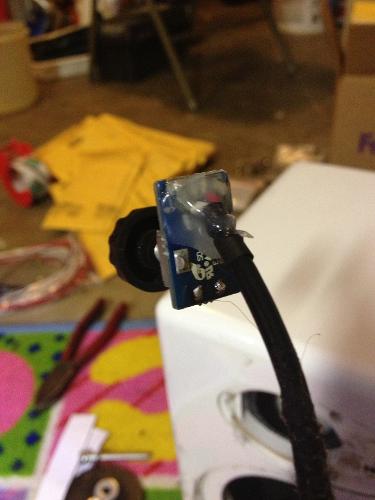Handy Ray
New Head-Fier
- Joined
- Apr 12, 2007
- Posts
- 44
- Likes
- 10
Quote:
Looks good, looks like you have got it all down.
When you shunt the ceramic/polymers, the capacitance is replaced by inductance of a wire (which is tiny, tiny), and the AC coupling becomes DC coupling, and you get rid of that pesky capacitor.
When you replace the capacitors at the input with home-made bipolars (of 2 silmics back to back), you need a capacitance that is MORE OR EQUAL to the existing value. So on diyaudio, the value was 22uf x 2, which means the total capacitance is:
Total Effectice Capacitance = 1/( 1/C1+1/C2+1/C3.......), so for only 2 capacitors in series and each one is 22uf, the effective capacitance is 1/(1/22+1/22) = 11uf, which is just perfect. You can get Silmic II in 25V varieties at 22uf for really cheap from digikey (and stock up on some while you are at it).
Try these mods first, and let us know what you think. I think you'll notice a difference now that the coupling is just 1 set of high quality caps, all DC inside the multi-stage amplification.
Understood.
The guy from the thread is emailing me and assisting me with this mod.
He says to use two capacitors and connect the positive legs together, thus making it a bi-polar capacitor with two negatives.
Just like you, he says the Bipolar will reduce distortion that is induced by the capacitors.
Here is a mini map-out of what i will be doing
Either + with +, or - with - should work. (for making bipolar capacitor from two polar capacitors)
By shunting the ceramic/polymers, wouldn't that lower the overall capacitance? Should i have to make it up when using the Elna Silmics?
That is the part in which i do not understand.
I will order some Silmic II's today. Is there any other possible mods that you can think of to improve the signal path?
Tim
Looks good, looks like you have got it all down.
When you shunt the ceramic/polymers, the capacitance is replaced by inductance of a wire (which is tiny, tiny), and the AC coupling becomes DC coupling, and you get rid of that pesky capacitor.
When you replace the capacitors at the input with home-made bipolars (of 2 silmics back to back), you need a capacitance that is MORE OR EQUAL to the existing value. So on diyaudio, the value was 22uf x 2, which means the total capacitance is:
Total Effectice Capacitance = 1/( 1/C1+1/C2+1/C3.......), so for only 2 capacitors in series and each one is 22uf, the effective capacitance is 1/(1/22+1/22) = 11uf, which is just perfect. You can get Silmic II in 25V varieties at 22uf for really cheap from digikey (and stock up on some while you are at it).
Try these mods first, and let us know what you think. I think you'll notice a difference now that the coupling is just 1 set of high quality caps, all DC inside the multi-stage amplification.























